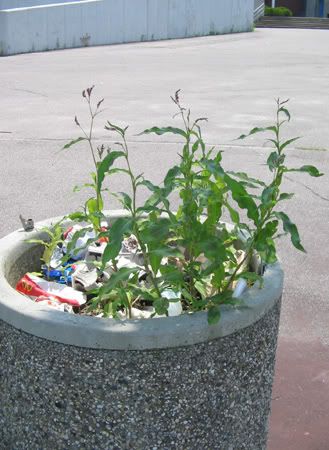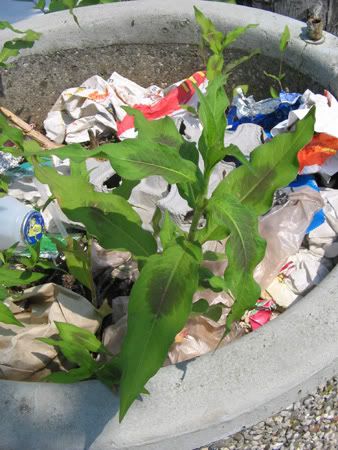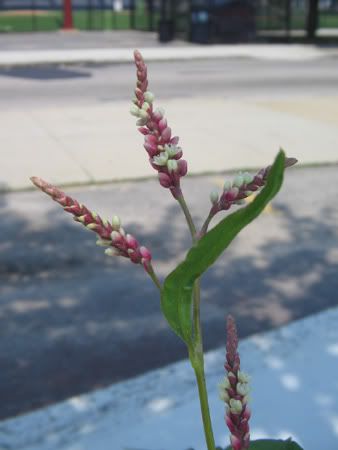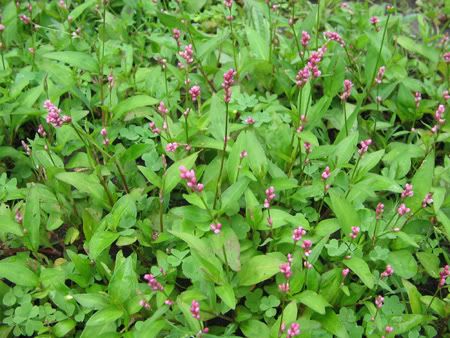365 Urban Species. #182: Lady's Thumb

Photo by urbpan. Location: outside Boston English High School.
Urban species #182: Lady's thumb Polygonum persicaria
Smartweeds are a group of closely related, hard to differentiate little weeds in the buckwheat family, in the genus Polygonum. Behind the scenes participants in this project (sorry, LiveJournal members only) provided some assistance with one of my attempts to identify a patch of these ubiquitous urban plants. Consensus among a group of people, botanically more well informed than me, was hard to come by. It's only because this project is called "365 Urban Species" and not "365 Urban Living Things" that I get hung up on species identifications. For the purposes of the average city dweller, to know a plant is a smartweed is more than sufficient. They all have clusters of tiny whitish to pinkish flowers, they all have "knees" (little joints on the stems) and many of them are fairly common in the city. Most have foliage that bears a peppery taste (the source of the common name--it "smarts" to eat them), and most of them have an affinity for saturated soil. One species (P. hydropiper) has the common name "waterpepper." There are species native to North America, such as the very common Pennsylvania smartweed P. pensylvanicum and species native to Europe, like the one featured here P. persicaria (if my identification is correct) or "lady's thumb". Lady's thumb gets its common name from the thumbprint-like marking on the leaves. This collection, growing in the debris atop a garbage can outside a Boston high school was a postscript highlight of our most recent Urban Nature Walk.

Lady's thumb foliage, showing the thumbprint markings.


Smartweeds are good sidewalk crack colonizers. Location: the Longwood trolley stop, Brookline.

A crowd of stunted Pennsylvania smartweeds (probably). Location: the Riverway, Boston.